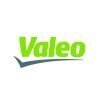Filter interviews by
Mikuni Production Engineer Interview Questions and Answers
9 Interview questions
The eight types of waste in lean manufacturing focus on eliminating inefficiencies to enhance productivity and value.
1. Overproduction: Producing more than needed, e.g., making 100 units when only 50 are required.
2. Waiting: Idle time when resources are not being utilized, e.g., workers waiting for materials.
3. Transport: Unnecessary movement of products, e.g., moving items across the facility multiple times.
4. Ex...
Implemented kaizen initiatives to streamline processes, reduce waste, and enhance efficiency in production workflows.
Conducted time-motion studies to identify bottlenecks in the assembly line, leading to a 15% reduction in cycle time.
Introduced standardized work procedures that minimized variability and improved training efficiency for new employees.
Implemented a visual management system using Kanban boards to tra...
A 'Why Why' analysis identifies root causes of problems by repeatedly asking 'why' to uncover underlying issues.
Helps in identifying the root cause of a problem rather than just addressing symptoms.
Involves asking 'why' multiple times (typically five) to drill down to the core issue.
Example: If a machine breaks down, asking 'why' could lead to discovering inadequate maintenance practices.
Encourages a systematic ap...
5S methodology enhances workplace efficiency through organization, cleanliness, and standardization.
Sort (Seiri): Remove unnecessary items from the workspace. Example: Discarding outdated tools.
Set in Order (Seiton): Organize tools and materials for easy access. Example: Labeling storage areas.
Shine (Seiso): Clean the workspace regularly to maintain a safe environment. Example: Daily cleaning schedules.
Standardize...
5W 1H is a technique used to gather information by asking five 'W' questions and one 'H' question.
5W 1H stands for Who, What, When, Where, Why, and How.
It is commonly used in journalism, problem-solving, and project management.
By asking these questions, one can gather comprehensive information about a situation or problem.
For example, in a production engineering context, the 5W 1H questions could be: Who is respon...
The base documents of a control plan include process flow diagrams, work instructions, and quality standards.
Process flow diagrams outline the sequence of steps in the production process.
Work instructions provide detailed instructions on how to perform each step of the process.
Quality standards define the criteria for acceptable quality and specify the required inspections and tests.
Other base documents may includ...
My KPI as a Production Engineer is to ensure efficient production processes, minimize downtime, and optimize product quality.
Monitoring and improving production efficiency
Reducing downtime through preventive maintenance
Implementing quality control measures
Optimizing production output
Analyzing and improving production costs
OEE (Overall Equipment Efficiency) can be calculated by multiplying Availability, Performance, and Quality percentages.
Calculate Availability by dividing the total operating time by the planned production time.
Calculate Performance by dividing the actual production rate by the maximum production rate.
Calculate Quality by dividing the good units produced by the total units produced.
Multiply the Availability, Perfor...
4M is a methodology used in production engineering. Retroactive refers to actions taken after an event, while prospective refers to actions taken before an event.
4M is a methodology used in production engineering that stands for Man, Machine, Material, and Method.
Man refers to the human resources involved in the production process.
Machine refers to the equipment and tools used in production.
Material refers to the ...
Mikuni Production Engineer Interview Experiences
2 interviews found
I appeared for an interview in Sep 2024.
(5 Questions)
- Q1. What were your job responsibilities in your previous position?
- Ans.
In my previous role as a Production Engineer, I managed production processes, optimized workflows, and ensured quality standards.
Oversaw daily production operations, ensuring efficiency and adherence to schedules.
Implemented process improvements that reduced production time by 15%.
Collaborated with cross-functional teams to troubleshoot and resolve production issues.
Conducted regular quality control inspections to main...
- Q2. How many personnel did you manage?
- Ans.
I managed a team of 10 personnel, overseeing their daily tasks and ensuring project goals were met efficiently.
Led a team of 10 engineers in a manufacturing project, coordinating schedules and tasks.
Implemented training programs for new hires, improving team productivity by 15%.
Conducted regular performance reviews, providing feedback and setting goals for team members.
Facilitated communication between departments to s...
- Q3. What is the purpose of a " Why Why" analysis?
- Ans.
A 'Why Why' analysis identifies root causes of problems by repeatedly asking 'why' to uncover underlying issues.
Helps in identifying the root cause of a problem rather than just addressing symptoms.
Involves asking 'why' multiple times (typically five) to drill down to the core issue.
Example: If a machine breaks down, asking 'why' could lead to discovering inadequate maintenance practices.
Encourages a systematic approac...
- Q4. What are the implications of the 5S methodology?
- Ans.
5S methodology enhances workplace efficiency through organization, cleanliness, and standardization.
Sort (Seiri): Remove unnecessary items from the workspace. Example: Discarding outdated tools.
Set in Order (Seiton): Organize tools and materials for easy access. Example: Labeling storage areas.
Shine (Seiso): Clean the workspace regularly to maintain a safe environment. Example: Daily cleaning schedules.
Standardize (Sei...
- Q5. What products did you assemble during your experience?
(2 Questions)
- Q1. What kaizen initiatives have you implemented to reduce time?
- Ans.
Implemented kaizen initiatives to streamline processes, reduce waste, and enhance efficiency in production workflows.
Conducted time-motion studies to identify bottlenecks in the assembly line, leading to a 15% reduction in cycle time.
Introduced standardized work procedures that minimized variability and improved training efficiency for new employees.
Implemented a visual management system using Kanban boards to track wo...
- Q2. Are you familiar with the concept of the eight types of waste in lean manufacturing?
- Ans.
The eight types of waste in lean manufacturing focus on eliminating inefficiencies to enhance productivity and value.
1. Overproduction: Producing more than needed, e.g., making 100 units when only 50 are required.
2. Waiting: Idle time when resources are not being utilized, e.g., workers waiting for materials.
3. Transport: Unnecessary movement of products, e.g., moving items across the facility multiple times.
4. Extra P...
(2 Questions)
- Q1. Are you willing to relocate to Neemrana?
- Ans.
Yes, I am open to relocating to Neemrana for the opportunity to grow and contribute as a Production Engineer.
Relocating to Neemrana aligns with my career goals and aspirations.
I am excited about the potential to work in a new environment and learn from different challenges.
I have previously relocated for work, such as moving to a different city for an internship, which helped me adapt quickly.
I believe that working in ...
- Q2. What are your salary expectations?
Interview Preparation Tips
I appeared for an interview in Aug 2023.
(2 Questions)
- Q1. Why are you change job ?
- Ans.
I am seeking new challenges and opportunities for growth that align with my career goals and aspirations in production engineering.
Desire for professional growth: I want to expand my skills and take on more responsibilities, such as leading projects.
Seeking a better cultural fit: My current workplace lacks collaboration, and I thrive in team-oriented environments.
Interest in innovative technologies: I am excited about ...
- Q2. What is your notice period?
(5 Questions)
- Q1. What is your KPI
- Ans.
My KPI as a Production Engineer is to ensure efficient production processes, minimize downtime, and optimize product quality.
Monitoring and improving production efficiency
Reducing downtime through preventive maintenance
Implementing quality control measures
Optimizing production output
Analyzing and improving production costs
- Q2. How to calculate OEE
- Ans.
OEE (Overall Equipment Efficiency) can be calculated by multiplying Availability, Performance, and Quality percentages.
Calculate Availability by dividing the total operating time by the planned production time.
Calculate Performance by dividing the actual production rate by the maximum production rate.
Calculate Quality by dividing the good units produced by the total units produced.
Multiply the Availability, Performance...
- Q3. What is 4M and what is retroactive & prospective
- Ans.
4M is a methodology used in production engineering. Retroactive refers to actions taken after an event, while prospective refers to actions taken before an event.
4M is a methodology used in production engineering that stands for Man, Machine, Material, and Method.
Man refers to the human resources involved in the production process.
Machine refers to the equipment and tools used in production.
Material refers to the raw m...
- Q4. What is base documents of control plan
- Ans.
The base documents of a control plan include process flow diagrams, work instructions, and quality standards.
Process flow diagrams outline the sequence of steps in the production process.
Work instructions provide detailed instructions on how to perform each step of the process.
Quality standards define the criteria for acceptable quality and specify the required inspections and tests.
Other base documents may include con...
- Q5. What is 5W 1H
- Ans.
5W 1H is a technique used to gather information by asking five 'W' questions and one 'H' question.
5W 1H stands for Who, What, When, Where, Why, and How.
It is commonly used in journalism, problem-solving, and project management.
By asking these questions, one can gather comprehensive information about a situation or problem.
For example, in a production engineering context, the 5W 1H questions could be: Who is responsible...
Top trending discussions






Interview questions from similar companies

I applied via Job Fair and was interviewed before Mar 2021. There were 2 interview rounds.
I am graduation in Mechanical Engineering and also done my diploma mechanical automobile in ghaziabad
(1 Question)
- Q1. Tell me about yourself.
Interview Preparation Tips

I applied via Job Fair and was interviewed before Mar 2021. There were 2 interview rounds.
I am graduation in Mechanical Engineering and also done my diploma mechanical automobile in ghaziabad
(1 Question)
- Q1. Tell me about yourself.
Interview Preparation Tips

I applied via Campus Placement and was interviewed before Mar 2021. There were 3 interview rounds.

(2 Questions)
- Q1. Face to face depend on interview skill and confidence
- Q2. Skill and communication in the opportunity in the company
(2 Questions)
- Q1. Why should we hire you?
- Ans.
I have a strong background in production engineering and a proven track record of improving efficiency and reducing costs.
I have a Bachelor's degree in Production Engineering and have completed internships at two leading manufacturing companies.
I have successfully implemented process improvements that resulted in a 20% increase in production output at my previous job.
I am skilled in using various production software an...
- Q2. I am working in denso India pvt Ltd I am working in honsety and I am also good confidence and hardworking
Interview Preparation Tips

I applied via Job Fair and was interviewed before Mar 2021. There were 4 interview rounds.

Topic for discussion
(2 Questions)
- Q1. Technical education in subject
- Q2. Diploma realated couse
(5 Questions)
- Q1. What is your family background?
- Q2. What are your strengths and weaknesses?
- Ans.
My strengths include problem-solving, attention to detail, and strong technical skills. My weaknesses include being overly critical of my own work and sometimes struggling with delegation.
Strength: Problem-solving - I enjoy analyzing complex problems and finding efficient solutions.
Strength: Attention to detail - I have a meticulous approach to my work, ensuring accuracy and quality.
Strength: Strong technical skills - ...
- Q3. Tell me about yourself.
- Q4. I am Shivam Singh and graduation complete in Mechanical Engineering and also done my diploma mechanical automobile in ghaziabad
- Q5. I am hardworking I am honesty I am work in complete in time
Interview Preparation Tips

I applied via Recruitment Consultant and was interviewed in Dec 2020. There was 1 interview round.
Interview Questionnaire
2 Questions
- Q1. What is productivity in business
- Ans.
Productivity in business refers to the efficiency and effectiveness of the production process.
Productivity is the measure of output per unit of input.
It is important for businesses to maximize productivity to increase profits and remain competitive.
Factors that can affect productivity include technology, employee training, and management practices.
Examples of productivity measures include units produced per hour, reven...
- Q2. How you handling manpower
Interview Preparation Tips

Production Engineer Interview Questions & Answers
Toyoda Gosei Mindaposted on 3 Apr 2024
(1 Question)
- Q1. 7QC tools, 5'S, OEE formula, 4M change management, analysis,

What is your role in the company, and how did you achieve your target?

Production Engineer Interview Questions & Answers
Toyoda Gosei Mindaposted on 18 Aug 2023
I applied via Naukri.com and was interviewed before Aug 2022. There were 3 interview rounds.

(1 Question)
- Q1. Which parameters not affects the quality of casting but can reduce the CT ?
- Ans.
Parameters like mold temperature, pouring temperature, and cooling rate can reduce the casting cycle time without affecting quality.
Mold temperature
Pouring temperature
Cooling rate
(1 Question)
- Q1. What is the reason of resigning from your current company?
- Ans.
I am seeking new challenges and opportunities for growth that align with my career goals and aspirations.
Desire for professional growth: I want to expand my skill set and take on more responsibilities.
Seeking a better cultural fit: I believe a different company culture will enhance my productivity and job satisfaction.
Looking for new challenges: I am eager to tackle new projects that align with my interests and experti...
Mikuni Interview FAQs
Tell us how to improve this page.
Mikuni Interviews By Designations
- Mikuni Senior Engineer Interview Questions
- Mikuni Production Engineer Interview Questions
- Mikuni Quality Analyst Interview Questions
- Mikuni Production Supervisor Interview Questions
- Mikuni Purchase Manager Interview Questions
- Mikuni Maintenance Executive Interview Questions
- Mikuni R&D Engineer Interview Questions
- Mikuni Junior Engineer Interview Questions
- Show more
Interview Questions for Popular Designations
- Senior Engineer Interview Questions
- Project Engineer Interview Questions
- Junior Engineer Interview Questions
- Production Manager Interview Questions
- Production Officer Interview Questions
- Graduate Engineer Interview Questions
- Executive Engineer Interview Questions
- Senior Production Engineer Interview Questions
- Show more
Overall Interview Experience Rating
based on 2 interview experiences
Difficulty level
Duration
Production Engineer Interview Questions from Similar Companies
Mikuni Production Engineer Reviews and Ratings
based on 16 reviews
Rating in categories
|
Senior Engineer
97
salaries
| ₹4.6 L/yr - ₹9.6 L/yr |
|
Engineer
83
salaries
| ₹3.5 L/yr - ₹6.6 L/yr |
|
Diploma Trainee Engineer
51
salaries
| ₹1.5 L/yr - ₹2.5 L/yr |
|
Assistant Manager
45
salaries
| ₹5.6 L/yr - ₹12.8 L/yr |
|
Production Engineer
34
salaries
| ₹2.5 L/yr - ₹6.8 L/yr |

Bosch

Yazaki

Faurecia

Valeo
- Home >
- Interviews >
- Mikuni Interview Questions













